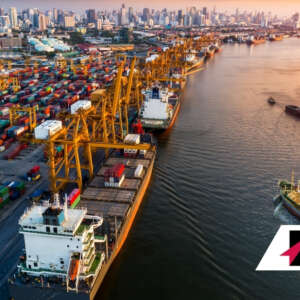While relying on manufacturing and production in Asia has been the trend in previous years, there has been a recent shift in the thinking of many major companies. Rather than outsource production, many are realizing it should take place closer to the market with regional supply chains.
Supply Chain Regionalization
The goal for supply chain managers should be to produce locally at low cost with shorter delivery times and less emissions. This becomes difficult when all production operations are overseas. The further a product has to travel to get to its destination, the longer it takes and the more people it takes to help it along to its final destination. When there are supply chain problems and disruptions, transportation delays become even worse.
In Search of a Lower Cost
For decades, supply chains were planned around finding the lowest cost, which resulted in production moving to Asia for many industries. But the quest for low wages created long and very complex supply chains.
However, natural disasters, the pandemic, and geopolitical conflicts in recent years have all created serious complications for global supply chains, which are all interconnected. Even the smallest of disruptions can throw supply chains off-kilter and returning to normal can take weeks or months.
Retailers Go Regional
With the many disruptions over the last two years, companies are being made aware of just how difficult global supply chains can be to manage. As a result, they are starting to change their thinking about having completely global operations. In fact, there are several large companies that are looking to bring production closer to home and re-shore certain parts of their operations.
Walmart is one example of a company that is looking closer to home when it comes to production. They are setting up a $350 billion program over the next ten years to manufacture products like household appliances, textiles, and toys in the United States, so they are not reliant solely on Asian production. Companies like Texas Instruments, Samsung, Intel, and TSMC have announced major investments in fabrication plants in the U.S., as opposed to expanding their operations in Asia.
How to Reconfigure Your Global Supply Chain
Regionalization does not mean becoming completely independent from other countries. Instead, it is a way to minimize the risk in the entire chain. Start by understanding what you want to achieve so you can optimize your value chain with your goals.
– Data Collection: The first step to regionalize your supply chain is to collect data and run models. Cross-functional teams should be involved at all levels to ensure everything is being covered. For example, in order to re-shore the production of certain parts, you will need to understand the moveability of each raw material.
– Growth Markets: There is a need to also understand where growth markets are. Labor costs are rising in developing countries and developing countries are consuming much of their own output. Some products could be consumed by the rising middle class in certain countries that you may already be producing in.
– Evaluate Costs: The total cost for changing manufacturing locations is important to evaluate before making the move. All of the possible replacements across the chain from suppliers to freight forwarders should be considered. Shipping costs have varied greatly in the past two years so figuring out the total cost of transportation from a new location must also be a point.
– Supplier Management: Supply chains have become complex not only in materials and parts but also in resources. Any regionalization strategy must include supplier management as your suppliers must be on board with a change in location. Suppliers will need to be transparent about where and how they source materials, and how this will affect your cost. Open communication with suppliers and vendors is critical.
– Customization: There is no one regionalization model that fits every company because supply chains differ greatly among industries. The strategic goals of the value chain need to be evaluated in coming up with a plan for regionalization.
The move to regionalization is not one to be taken lightly as there are many factors to consider. It takes time to diversity the supply chain and find the best mix for your company.
Your Trusted Partner
At Red Arrow Logistics, we provide expertise and white glove customer service with fast-growing, complex, and high-value supply chains. As the next-generation model of logistics companies, we offer tailored transportation and logistics solutions — from single shipments to complex over-dimensional and international orders.
Red Arrow offers the scale and scope of services including air, ocean, and ground transportation to meet the budget and schedule requirements of the largest and smallest companies alike. If we can be of assistance, please email us at info@redarrowlogistics.com or give us a call at 425-747-7914.





